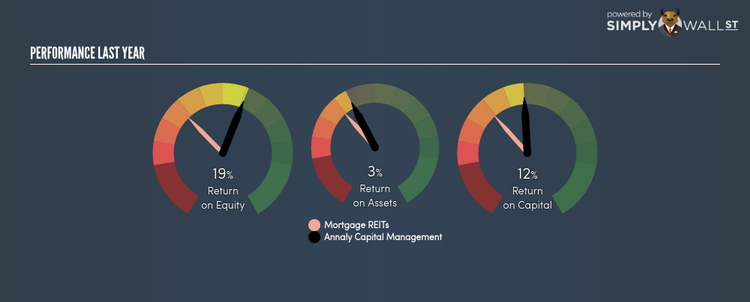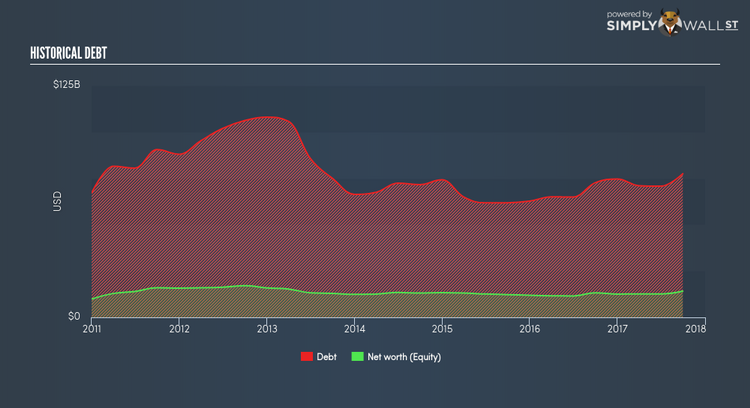Annaly Capital Management Inc (NLY) Delivered A Better ROE Than The Industry, Here’s Why

Annaly Capital Management Inc (NYSE:NLY) delivered an ROE of 19.48% over the past 12 months, which is an impressive feat relative to its industry average of 8.92% during the same period. Superficially, this looks great since we know that NLY has generated big profits with little equity capital; however, ROE doesn’t tell us how much NLY has borrowed in debt. Today, we’ll take a closer look at some factors like financial leverage to see how sustainable NLY’s ROE is. See our latest analysis for NLY
What you must know about ROE
Return on Equity (ROE) weighs NLY’s profit against the level of its shareholders’ equity. For example, if NLY invests $1 in the form of equity, it will generate $0.19 in earnings from this. Generally speaking, a higher ROE is preferred; however, there are other factors we must also consider before making any conclusions.
Return on Equity = Net Profit ÷ Shareholders Equity
Returns are usually compared to costs to measure the efficiency of capital. NLY’s cost of equity is 8.49%. This means NLY returns enough to cover its own cost of equity, with a buffer of 10.99%. This sustainable practice implies that the company pays less for its capital than what it generates in return. ROE can be split up into three useful ratios: net profit margin, asset turnover, and financial leverage. This is called the Dupont Formula:
Dupont Formula
ROE = profit margin × asset turnover × financial leverage
ROE = (annual net profit ÷ sales) × (sales ÷ assets) × (assets ÷ shareholders’ equity)
ROE = annual net profit ÷ shareholders’ equity
Basically, profit margin measures how much of revenue trickles down into earnings which illustrates how efficient NLY is with its cost management. The other component, asset turnover, illustrates how much revenue NLY can make from its asset base. And finally, financial leverage is simply how much of assets are funded by equity, which exhibits how sustainable NLY’s capital structure is. Since financial leverage can artificially inflate ROE, we need to look at how much debt NLY currently has. The debt-to-equity ratio currently stands at over 2.5 times, meaning the above-average ratio is a result of a large amount of debt.
What this means for you:
Are you a shareholder? NLY’s ROE is impressive relative to the industry average and also covers its cost of equity. However, with debt capital in excess of equity, ROE might be inflated by the use of debt funding, which is something you should be aware of before buying more NLY shares. If you’re looking for new ideas for high-returning stocks, you should take a look at our free platform to see the list of stocks with Return on Equity over 20%.
Are you a potential investor? If NLY has been on your watch list for a while, making an investment decision based on ROE alone is unwise. I recommend you do additional fundamental analysis by looking through our most recent infographic report on Annaly Capital Management to help you make a more informed investment decision.
To help readers see pass the short term volatility of the financial market, we aim to bring you a long-term focused research analysis purely driven by fundamental data. Note that our analysis does not factor in the latest price sensitive company announcements.
The author is an independent contributor and at the time of publication had no position in the stocks mentioned.


